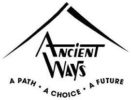Here is something that was just received from Zimbabwe. Ironically Brendan is sending this exactly when I was due to travel and arrive for my work there (the 25th/26th) but canceled my trip … it’s just like a musician to have incredible timing! See also Brendan’s website brendantaaffe.com
Some of you have been to Zimbabwe and some haven’t but his writing is reminiscent of going to the ‘rural home’ (kumusha) and is very comforting to hear. Its so helpful to what we are doing there to have someone share their personal insights.
“Meat with Bones”
Early evening in Harare, and I have just returned from a visit to Mhondoro, a rural area about two hours outside of the capital. This is my third day in Zimbabwe, not counting the first night when I arrived after some twenty four hours of travel from London, and I’m beginning to make some sense of it. But first a swirl of images, starting with the road from the airport, the sky spreading out at sunset in a way that makes the world, more than anything, feel flat and wide. Roads in bad shape; dollar bills (the going currency here) used so many times that they are brown and soft rather than green and crisp; jacaranda trees arching, gracefully, over one of the central avenues in Harare; roadsides everywhere lined with people selling airtime for cell phones, tomatoes, and bananas; people walking, crammed into combis, hanging out; small patches of corn anywhere it can fit, even in Harare; dirt yards, carefully swept every morning; sadza with every meal.
I am staying, these first days, with Cosmas Magaya and his family: Cosmas is a master mbira player that I had met in the States. He has been hosting me, and yesterday took me to visit Mhondoro, his home village and the site of Nhimbe for Progress, an aid project that he directs. The road to Mhondoro was great: flat African savannah rolling by, two baboons at the side of the road, fields and fields of corn and, as we got closer, round huts with conical thatched roofs—exactly what a tourist in Africa wants to see. Arriving at Nhimbe—a combination of a pre-school and a village health center, a cluster of round blue huts—about 80 children were playing in the yard with some old tires, some homemade monkey bars under way. There was then a long series of introductions, which was fine if a little formal, and then the awesomeness began. The children, ages three to six, gathered to sing Titambire vaenzi, a welcoming song that I’m excited to share once I get home, and then recited some adorable nursery rhymes. Twinkle, twinkle in a four year old’s Shona-inflected English is, as the immortal Larry Gordon would say, “to die for”. A few more songs and some wandering about, and then the marimba band started up. Three instruments had been set outside in the grass, between two of the huts, played by some lads in their 20s. Once they started rolling, children appeared from everywhere and started to dance. First a small group of 10 year old girls who could really tear it up and then a surging mass of pre-schoolers and then the adults and words can not describe how awesome this was. They played for at least half an hour, the children dancing the whole time. For all of our advanced educational opportunities and technology in the U.S.—interactive white boards and computers in every classroom as opposed to Nhimbe, where the children learn to write and draw with chalk on the concrete floor because of a lack of blackboards—for all of this, I have never seen anything in an American school to rival the pure and sustained joy that I saw as these kids danced and danced. Nor the sophistication: 4 year olds clapping polyrhythms and dancing some complicated steps. When I get a chance, I’ll post a few videos of the marimba band and the dancers.
Amidst all this awesomeness, Nhimbe is also a project in need of support. At the end of my time here, I’ll be leaving a lot of the clothes that I brought (can’t do it yet, because I need to wear them), some odds and ends, and a little money. If you are able, they can use much more support than that: they need more instruments, blackboards, and medicine as well as the ability to compensate their staff. More important, to my mind, than what they need is what they are doing, which is multiplying joy. These children, by any standard, are poor: but I can only think this strong foundation is not only what they need, but is what this country needs. You can find Nhimbe for Progress on the web at https://ancient-ways.org/
As if that wasn’t enough for a day… when evening came, I found myself in the kitchen hut playing mbira with Cosmas, while chicken necks and sadza cooked over an wood fire, a candle flickering in the middle of the room, a woman breastfeeding her son. Moments where I was in the flow, hearing both parts and settling into the music: other moments where I thought that if I were ever to make a bucket list, those things one must do before dying, that this would be on the list, sitting in a candle-lit hut in a village in Zimbabwe playing the mbira.
Cosmas has spent a lot of time in the U.S., teaching and performing. We were talking about that experience and he said that one of the things he misses most when he is in America is meat with bones. When I arrived here and dinner that first night was chicken necks and sadza, I assumed that we were eating the necks because they were cheapest. But everyone here prefers meat with a lot of bone because it tastes better, and there’s a lesson to be found there.
Fambai zvakanaka,
Brendan
